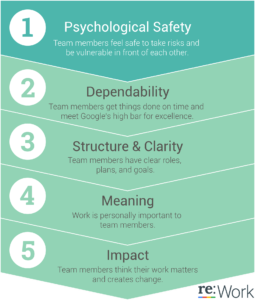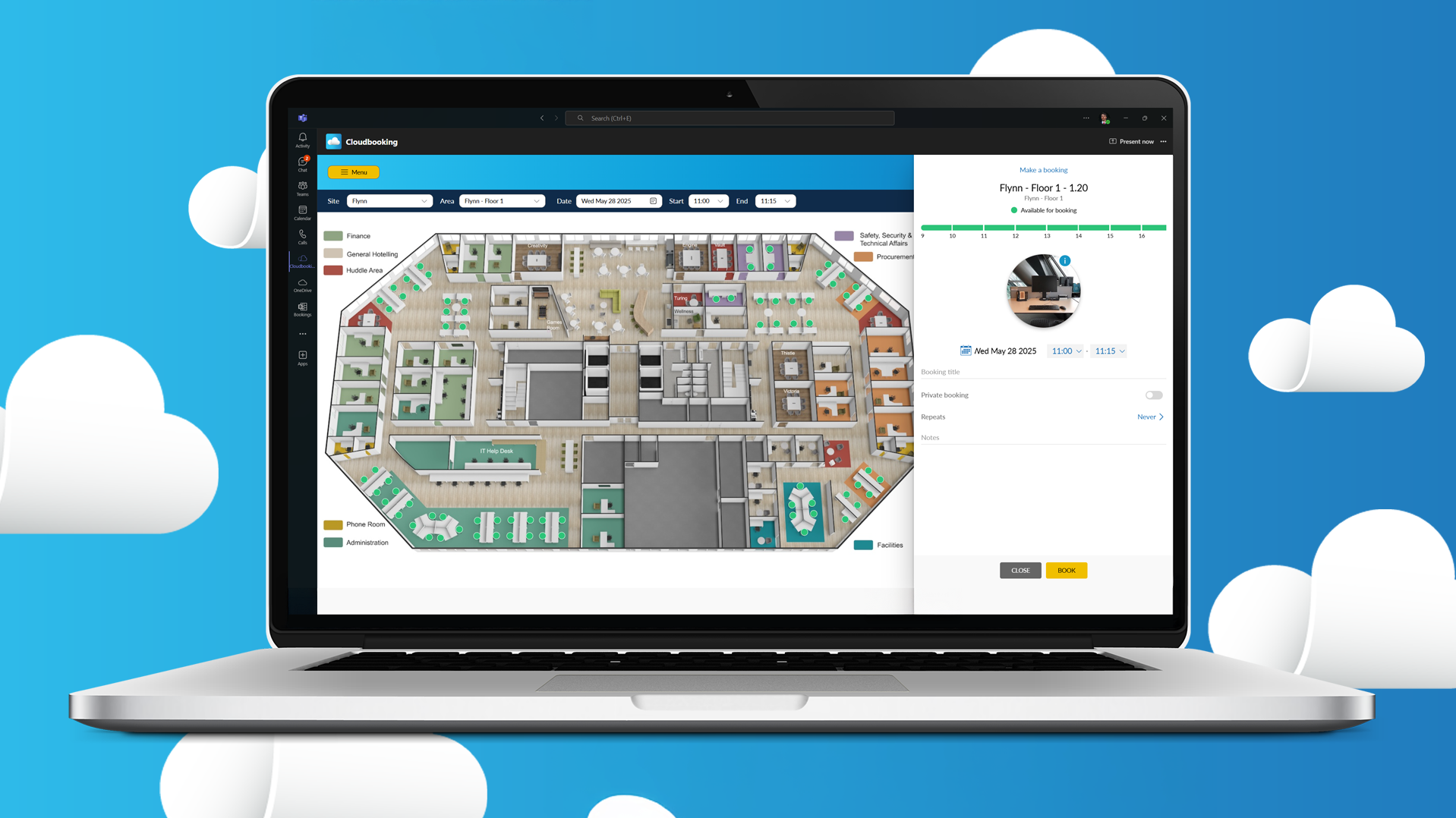
The concept of psychological safety in the workplace has been around for many years. But in a tumultuous post-pandemic world, employers and employees alike are placing renewed emphasis on the need for psychologically safe work environments.
What makes an effective team effective?
It’s a question that executives, managers, human resources specialists, and business schools around the world have tried to answer for years. Everyone and their mom know that employee engagement is the secret to workplace productivity. Happy or engaged workers are productive workers — or so the adage goes.
But the “how” of increasing employee engagement is far more elusive.
Related Reading: How to Build an Employee Engagement Strategy for 2022
Psychological safety: The hallmark of effective teams
In 2012, Google — a company that has consistently won awards for its corporate culture — embarked on a mission to understand how to build and support the “perfect team.” Code-named Project Aristotle (after the Greek philosopher who is thought to have said “the whole is greater than the sum of its parts”), the initiative sought to study hundreds of teams at Google to pinpoint the specific factors driving team success and failure.
The company’s researchers discovered that creating a so-called perfect team isn’t so much about who is on the team but more about how the team functions as one. They narrowed their findings down to five factors, which:
- Had an impact on several team metrics
- Were present in different successful teams across multiple departments
- Showed consistent statistical significance.
Of the five pillars driving team effectiveness, psychological safety was deemed the most important.

Pillars of Effective Teams
Source: Google
What is psychological safety in the workplace?
Psychological safety refers to a person’s perception of the consequences of taking interpersonal risks. In the workplace, it’s the feeling of safety among your workers who know they won’t be punished or embarrassed when taking risks — whether it’s pitching a new idea, raising concerns, or making mistakes.
According to Google’s research, teams with high levels of perceived psychological safety are composed of people who feel confident about being vulnerable or taking unorthodox approaches without fear of being seen as incompetent, ignorant, or negative.
Psychological safety also goes beyond team effectiveness, impacting other metrics such as employee satisfaction and retention.
According to the 2019 People Management Report by The Predictive Index, employees who feel psychologically safe in their working environment were less likely to quit their jobs. In particular, those who strongly agreed they could freely approach their managers for help were least likely to quit.
Psychological safety at work gets renewed attention
Psychological safety has also re-emerged as a trending concept in workplace management, largely due to its relevance in supporting agile working environments, diversity and inclusion, and hybrid working. As more organisations abandon the traditional nine to five setup in co-located workspaces, employers face the challenge of building and maintaining environments that engender trust, collaboration, and open communication.
Related Reading: Is The 9-5 Working Day Dead? How to Adapt Your Business
But for many companies, promoting psychological safety can be more difficult than expected.
A Harvard Business Review report explains that many employers conflate psychological safety with safe or healthy environments, such as those that protect workers from harassment or work-related injuries. In fact, the article notes that psychologically safe work environments are rare.
How to promote psychological safety in the workplace
As with any major workplace initiative, creating psychological safety in the workplace begins with an organisation’s leaders. Here are a few ways your managers and executives can nurture psychological safety.
1. Assess your team’s level of psychological safety
You’ll need to get your employees’ honest feedback to assess how psychologically safe they feel in the workplace. Even if you think you have an open and inclusive work culture, your employees may still have an aversion to taking risks, such as saying, “I think this process could be improved,” or “I’m not sure how this tactic helps us meet our goals.”
Fortunately, your employees can simply tell you how psychologically safe they feel in their teams.
Related Reading: How to Enhance Workplace Culture in a Post-Covid Hybrid Environment
Cloudbooking Tip: To measure a team’s perceived sense of psychological safety, Edmondson suggests asking workers to agree or disagree with statements such as:
- If you make a mistake, it’s often held against you.
- Team members can raise problems and talk about tough issues.
- It’s safe to take risks.
- It’s difficult to ask other team members for help.
- No one on this team would deliberately sabotage or undermine my efforts.
We recommend running an anonymous feedback survey to ensure employees can be as forthcoming as they want to be when rating their employee experience.
2. Implement consultative and supportive leadership
Research by McKinsey & Company argues that a positive work climate and psychological safety are most likely to occur when a team’s leaders display supportive and consultative behaviors. In contrast, the study notes that authoritative leadership, or the traditional command-and-control style of management that grew out of favor during the pandemic, damages psychological safety.
Cloudbooking Tip: Consultative leadership is characterised by leaders consulting team members, soliciting their feedback, and considering their views on issues that affect them. You can implement an open door policy to encourage open discussions between workers and senior-level staff.
Related Reading: What Is an Open-Door Policy and Why Do Workers Want It?
Supportive leadership, on the other hand, refers to leaders showing genuine concern and support for team members — not just as workers but as actual people. Go beyond paying lip service when “showing” concern. Check-in on your team members’ mental health, encourage them to take paid time off/annual leave, and make sure they aren’t burning themselves out.
3. Frame mistakes as opportunities for learning
It’s natural for workers to be afraid of making mistakes — especially if they operate in high-pressure environments where missteps can lead to damage and losses. Still, the last thing you want to do is punish people for experimenting and taking reasonable risks. This has the knock-on effect of stifling creative work and innovation.
Cloudbooking Tip: Make it a team policy to treat mistakes as learning opportunities. Discuss what went wrong, why it happened, and how to prevent the same mistake from happening again. In fact, we’d recommend taking things a step further by rewarding failures.
As former chairman of IBM Thomas Watson Sr. once said, “The fastest way to succeed is to double your failure rate.” Some of the world’s most successful companies publicly reward their people for botched projects. Google, for example, has an entire laboratory for projects likely to fail. Advertising and marketing agency Grey has a “Heroic Failure” award for workers taking bold and edgy risks.
Over to you
While the modern workplace may be in a state of flux, the keys to driving employee engagement remain the same. Building psychological safety at work empowers employees to be the best version of themselves without fear of ridicule or embarrassment for being bold and different.
Discover more insights about employee engagement by reading our other guides in the Cloudbooking blog. If you’re looking for a software solution to facilitate open communication and collaborative work in your hybrid offices, let Cloudbooking help. Our workplace management platform is the perfect solution for improving employee visibility and supporting new ways of working (NWOW). Get in touch with our team to schedule an obligation-free demo.


